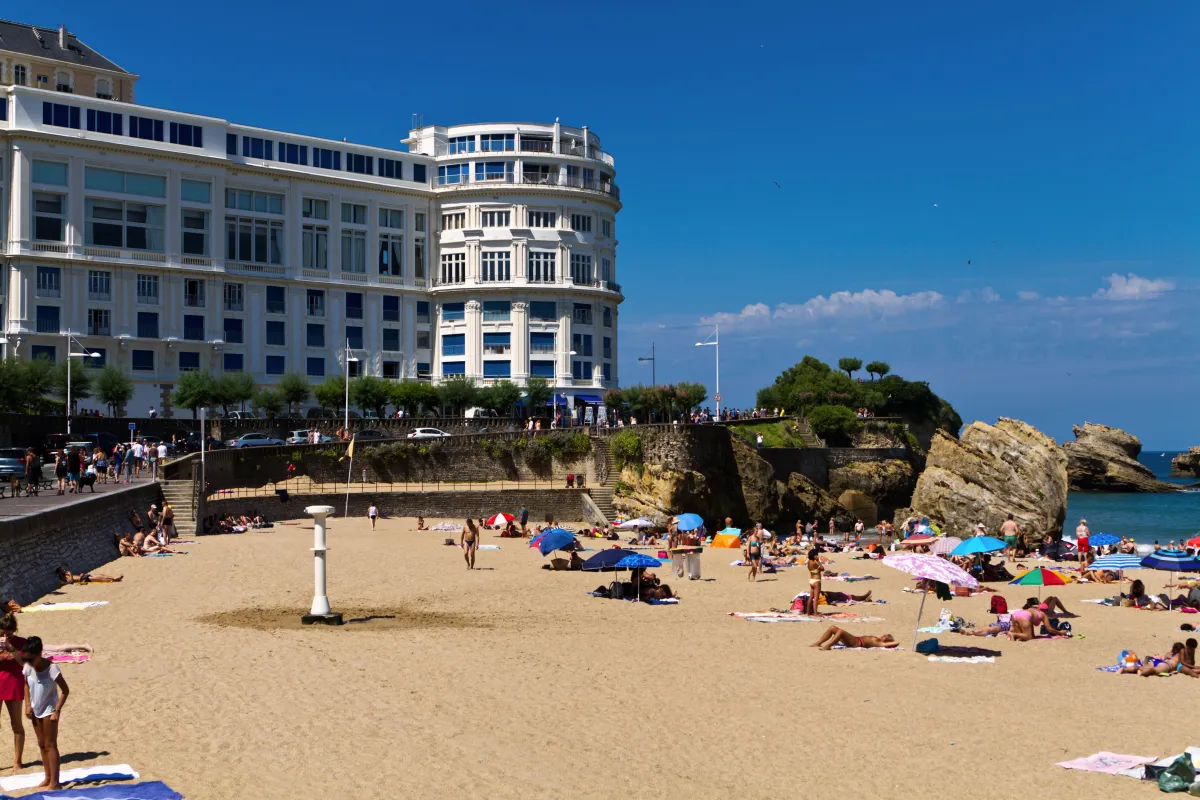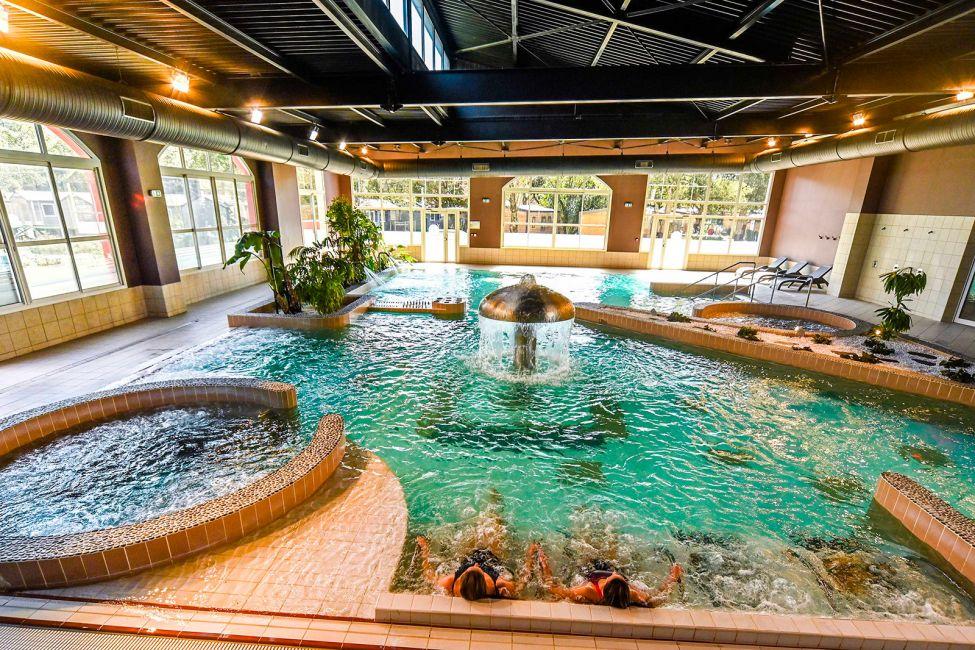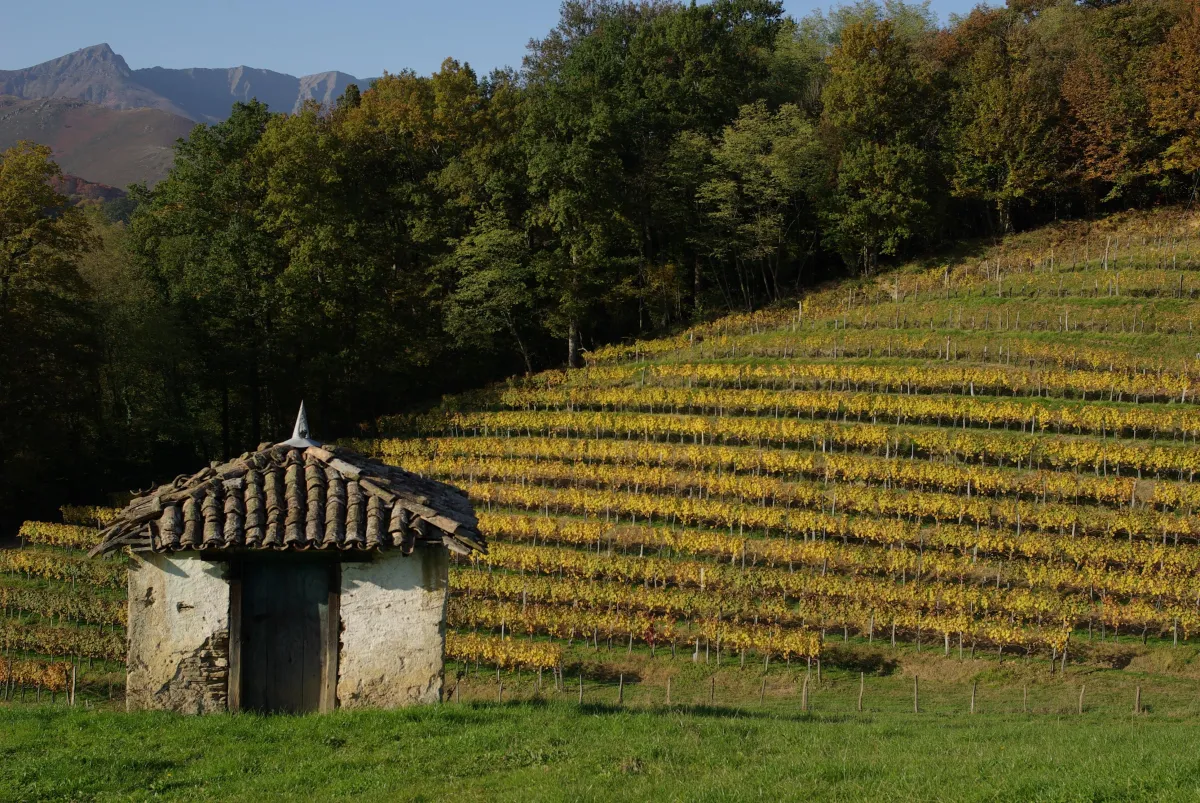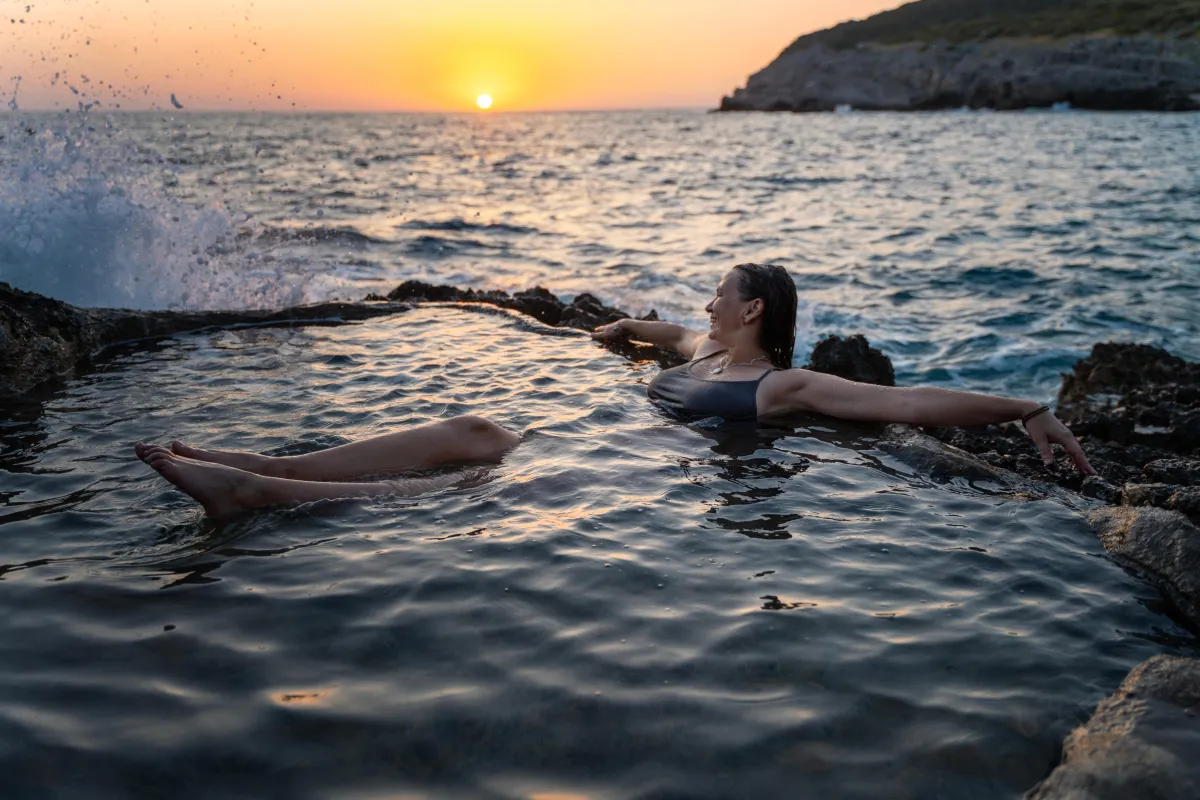
Discover Biarritz, Labenne & Dax
Basque Magic on the Atlantic Coast
Discover the Thermal & Culinary Soul of France’s Southwest Coast

DISCOVER ATLANTIC SOUTH-WEST FRANCE
Why Biarritz, Labenne & Dax
In the southwest corner of France, where the Atlantic Ocean crashes into golden sand and pine forest meets the foothills of the Pyrenees, lies a triad of destinations that embody the French art of wellness: Biarritz, Labenne, and Dax.
This stretch of coastline and countryside offers a rare blend of thalassotherapy, thermal waters, and spa culture, deeply rooted in regional tradition yet presented with contemporary flair.
Biarritz, once the summer playground of European royalty, remains a glamorous seaside escape — but beneath its surf culture and Basque charm lies a world-class marine wellness scene, where seawater therapies revitalise both body and mind. Just a short drive away, Labenne Océan offers a quieter, pine-scented sanctuary at Dune & Eau, a spa designed for restoration in nature’s embrace. And inland, Dax proudly holds its title as France’s oldest spa town, famous for its healing muds and therapeutic thermal springs used since Roman times.
Together, these three destinations create a circuit of coastal elegance, forest tranquility and mineral-rich rejuvenation. Whether you’re looking to unwind after a hike, escape the northern winter, or experience the underexplored heart of French wellness, Biarritz, Labenne and Dax deliver relaxation, character and deep regional soul.

WHY WE LOVE THIS REGION
Biarritz, Labenne & Dax
Where Ocean, Pines & Pyrenees Meet
Dramatic coastlines, tranquil pine forests, and rolling hills form a scenic backdrop for healing and exploration. Each destination feels distinct, yet harmoniously connected by nature.
Hearty Cuisine & Basque Flavour
Savour duck confit, oysters, Espelette peppers and artisan cheeses, all paired with local wines from Gascony and Irouléguy. This is a true food-lovers’ retreat rooted in tradition and terroir.
Three Wellness Worlds in One Trip
From the glamorous thalassotherapy of Biarritz to the forest-fringed calm of Labenne and the deep thermal heritage of Dax, this region offers diverse, authentic spa experiences in close reach of each other.
Authentic French Culture, Unfiltered
For those seeking real connection, slower rhythms, and everyday elegance. From market mornings in Dax to Basque festivals in coastal villages, it’s France with its soul intact
.
Biarritz, Labenne & Dax Sample Itinerary
Arrival in Biarritz: Oceanfront Elegance
Arrival in Biarritz: Oceanfront Elegance
Arrive at Biarritz Airport. (We suggest hiring a car for this itinerary...but private transfers are possible) and head to the iconic Hôtel du Palais, a palatial 5-star retreat perched on the Atlantic coast. Once home to Empress Eugénie, this Hyatt-operated hotel offers opulence, ocean views, and direct access to Grande Plage.
Afternoon : Unwind at the Imperial Spa, featuring an indoor seawater pool, steam room, hammam, solarium and Guerlain signature treatments. For a gentle arrival, we recommend a relaxing jet bath and aromatherapy massage before exploring the coastline on foot.
Evening : Head to Le Café de la Grande Plage at Casino Barrière, just steps away. With its sweeping sea views, art deco interiors and elevated take on French classics, it’s the perfect place to dress up like Bond, order a martini, and settle into the Riviera rhythm.
Day 2 : Biarritz – Thalasso & Michelin Lunch Magic
Day 2 : Biarritz – Thalasso & Michelin Lunch Magic
Morning : Start the day with breakfast at the Palais, then enjoy a morning thalassotherapy session at Thalmar Biarritz, where hydrotherapy jets, seawater wraps, and marine scrubs leave you glowing.
Afternoon : Indulge in hydrotherapy and a signature mud treatment.
Afternoon : Indulge in hydrotherapy and a signature mud treatment.
Dinner : Sample authentic Andalusian dishes at Bodega Gonzalez. We suggest booking ahead for this authentic Jamoneria. With tapas and larger servings, good vino selection (and good house wines too!) this is a great nightcap to a relaxing day.
Day 3 : Dax: Thermal Heritage in France’s Spa Capital
Day 3 : Dax: Thermal Heritage in France’s Spa Capital
Morning Drive : Check out and drive inland to Dax (approx. 1 hr). France’s oldest spa town, it’s known for its therapeutic mud (peloïde) and mineral waters dating back to Roman times.
Midday : Check into Le Splendid Hôtel & Spa, a restored art deco treasure with thermal baths, a flotarium, caldarium and full spa menu. Begin with a traditional mud wrap followed by a jet shower for circulation and muscle relief.
Dinner : Dine in style at the hotel’s Brasserie, or for something more rustic, try Lou Cacairot for duck confit and Tannat wine, local favourites.
Day 4 : Labenne Océan: Forest Calm Meets Balneotherapy Bliss
Day 4 : Labenne Océan: Forest Calm Meets Balneotherapy Bliss
Morning : After a relaxed breakfast in Dax, head west to Labenne Océan (45 mins), a peaceful coastal village wrapped in pine forest.
Midday : Check in to Camping Sylvamar by Yelloh! Villages - don't be fooled by 'camping' - this is coastal pine glamping, and a spa destination all in itself with premium adult only zones.
Afternoon : Head to Dune & Eau, a tranquil spa offering heated freshwater pools with jets, sauna, hammam, and a full menu of body treatments. Adults only, the space is calm, quiet, and deeply restorative.
Dinner : Enjoy dinner at L’Auberge’Inn, known for its warm welcome and seasonal Landes cuisine. Try grilled duck breast with pear compote and a local Côtes de Gascogne white.
Day 5 : Final Spa & Beach Walk
Day 5 : Final Spa & Beach Walk
Morning : The Sylvamar Spa offers a surprisingly serene adults-only wellness space, perfect for a full morning’s reset. Soak in the indoor thermal pool, detox in the hammam and sauna, and unwind in the salt cave or bubbling hydro pool. The forested setting adds a natural stillness that’s rare in coastal resorts. Ideal for slow, quiet immersion to finish the trip.the beach to nearby Capbreton for oysters and a final toast.
Lunch : Walk along the beach to nearby Capbreton for oysters and a final toast, then drive back to Biarritz Airport for departure — relaxed, recharged, and likely already planning your return.

Dune & Eau: A Hidden Forest Spa on the Atlantic Coast
Just a few minutes from the Atlantic surf of Labenne Océan, tucked into pine forest and silence, Dune & Eau delivers one of France’s most underrated wellness experiences. This adults-only balneotherapy centre is not a grand hotel spa — it’s simpler, more intimate, and effortlessly calming.
The moment you enter, the mood shifts. Forest views, warm light and total quiet create an instant sense of privacy. The spa’s centrepiece is a large heated freshwater pool surrounded by glass, with hydromassage loungers, swan neck jets, Jacuzzi sections and still zones for floating and reflection. The environment is peaceful and nature-facing — the perfect counter to overstimulation.
The full thermal experience includes a hammam, sauna, and solarium, and a focused treatment menu that reflects the Landes terroir. Choose from a
candle oil massage, a bamboo body ritual or a revitalising exfoliation — all delivered with care and intention. The facilities are modern but intentionally minimal. It’s the atmosphere that restores you.
For double spa relaxation we recommend a stay at nearby Sylvamar, a forest-located wellness camp with adult-only spa cabins, private pools and direct access to Dune & Eau. Together, the experience feels like forest bathing meets slow luxury— deeply rejuvenating but totally unpretentious.
While our itinerary has only 1 night, you could easily make it 3 of 4 to surf, hike and visit the local vineyards and coastal drives. Dune & Eau offers a moment to stop, breathe, and be quiet. It’s a hidden gem you’ll wish you could bottle.

Irouléguy: France’s Most Beautiful Mountain Wine Region
Set against the Pyrenean foothills of the French Basque Country,
Irouléguy AOC is one of France’s smallest and most soulful wine regions — and an unforgettable addition to any spa and wellness escape.
Located just over an hour from Dax or Labenne, the region is defined by its steep, terraced vineyards clinging to south-facing mountain slopes. The wines — largely unknown outside France — are bold, mineral, and full of character. Expect powerful reds made from Tannat, Cabernet Franc and Cabernet Sauvignon, and lively whites built from
Petit Manseng and Gros Manseng.
Visiting Irouléguy means tasting at source. Top stops include Domaine Arretxea (biodynamic, deep and expressive), Cave d'Irouléguy
(the friendly cooperative), and Domaine Ilarria, where tradition meets altitude. Most winemakers welcome visitors personally, and tastings are generous, genuine, and rooted in place.
Pair your wine journey with a lunch stop in Saint-Jean-Pied-de-Port, where Basque stews, cheeses and pastries are served in timbered inns, often overlooking the River Nive. It’s more than wine tourism — it’s
a cultural deep dive wrapped in vines and mountain air
.

Irouléguy: France’s Most Beautiful Mountain Wine Region
Set against the Pyrenean foothills of the French Basque Country,
Irouléguy AOC is one of France’s smallest and most soulful wine regions — and an unforgettable addition to any spa and wellness escape.
Located just over an hour from Dax or Labenne, the region is defined by its steep, terraced vineyards clinging to south-facing mountain slopes. The wines — largely unknown outside France — are bold, mineral, and full of character. Expect powerful reds made from Tannat, Cabernet Franc and Cabernet Sauvignon, and lively whites built from
Petit Manseng and Gros Manseng.
Visiting Irouléguy means tasting at source. Top stops include Domaine Arretxea (biodynamic, deep and expressive), Cave d'Irouléguy
(the friendly cooperative), and Domaine Ilarria, where tradition meets altitude. Most winemakers welcome visitors personally, and tastings are generous, genuine, and rooted in place.
Pair your wine journey with a lunch stop in Saint-Jean-Pied-de-Port, where Basque stews, cheeses and pastries are served in timbered inns, often overlooking the River Nive. It’s more than wine tourism — it’s a cultural deep dive wrapped in vines and mountain air
.

Thalassotherapy: Sea Wellness
Few wellness traditions feel as naturally integrated into their environment as thalassotherapy — the therapeutic use of seawater, marine mud, and ocean air to restore the body and calm the mind. Along France’s southwest Atlantic coast, particularly around Biarritz, thalassotherapy is more than a trend — it’s a way of life.
The principle is simple: the ocean contains minerals and trace elements
like magnesium, calcium and potassium that mirror those found in human plasma. When applied through heated seawater pools, hydro-massage, algae wraps or marine mist inhalation, the body can absorb these elements through the skin — reducing inflammation, boosting circulation and supporting detoxification.
In Biarritz, this tradition runs deep. The town has been a centre for ocean-based wellness since the 19th century, when Empress Eugénie made it her preferred retreat. Today, centres like Thalmar Biarritz
continue the legacy with modern sophistication: multi-pool circuits, underwater jet therapy, body scrubs with Atlantic sea salt, and marine mud wraps designed to ease muscle fatigue, arthritis, and stress.
What makes thalassotherapy particularly unique is its combination of
climate, salt, and movement. Treatments are often paired with gentle exercise — think aqua-gym, ocean-view yoga or beach walks in the bracing sea air — making it a holistic experience that feels energising rather than indulgent.
Unlike thermal spas which draw from underground mineral springs, thalassotherapy works directly with the living ocean, making it inherently seasonal and local. The briny scent of seaweed, the sound of crashing waves, and the cool Atlantic breeze all become part of the therapy.
For travellers coming to the Landes and Basque coast for relaxation,
thalassotherapy offers an ideal start or end point. It’s light, refreshing, and naturally suited to those looking to restore balance after long travel, stress, or screen fatigue.
Whether you book a full marine detox program or just slip into a warm seawater pool for an hour, thalassotherapy connects you — body and soul — to the healing power of the sea.
Thalassotherapy: Sea Wellness
Few wellness traditions feel as naturally integrated into their environment as thalassotherapy — the therapeutic use of seawater, marine mud, and ocean air to restore the body and calm the mind. Along France’s southwest Atlantic coast, particularly around Biarritz, thalassotherapy is more than a trend — it’s a way of life.
The principle is simple: the ocean contains minerals and trace elements
like magnesium, calcium and potassium that mirror those found in human plasma. When applied through heated seawater pools, hydro-massage, algae wraps or marine mist inhalation, the body can absorb these elements through the skin — reducing inflammation, boosting circulation and supporting detoxification.
In Biarritz, this tradition runs deep. The town has been a centre for ocean-based wellness since the 19th century, when Empress Eugénie made it her preferred retreat. Today, centres like Thalmar Biarritz
continue the legacy with modern sophistication: multi-pool circuits, underwater jet therapy, body scrubs with Atlantic sea salt, and marine mud wraps designed to ease muscle fatigue, arthritis, and stress.
What makes thalassotherapy particularly unique is its combination of
climate, salt, and movement. Treatments are often paired with gentle exercise — think aqua-gym, ocean-view yoga or beach walks in the bracing sea air — making it a holistic experience that feels energising rather than indulgent.
Unlike thermal spas which draw from underground mineral springs, thalassotherapy works directly with the living ocean, making it inherently seasonal and local. The briny scent of seaweed, the sound of crashing waves, and the cool Atlantic breeze all become part of the therapy.
For travellers coming to the Landes and Basque coast for relaxation,
thalassotherapy offers an ideal start or end point. It’s light, refreshing, and naturally suited to those looking to restore balance after long travel, stress, or screen fatigue.
Whether you book a full marine detox program or just slip into a warm seawater pool for an hour, thalassotherapy connects you — body and soul — to the healing power of the sea.
FAQs ABOUT THERMAL TOURISM
What is thermal tourism?
Thermal tourism refers to travel centred around natural hot springs, thermal baths, and spa facilities that utilise geothermal or mineral-rich waters for relaxation, healing, and wellness.
Why is Europe a popular destination for thermal tourism?
Europe has a rich history of thermal bathing, from ancient Roman baths to medieval and modern spa resorts. Countries like Hungary, Spain, France, and Italy are home to natural hot springs and world-class spa facilities, making the continent a global leader in wellness tourism.
What are the benefits of thermal tourism?
Thermal waters are believed to :
1. Relieve muscle and joint pain
2. Improve skin conditions.
3. Boost circulation.
4. Promote relaxation and mental well-being.
What is the difference between a balneario and a thermal spa?
A balneario is a Spanish term for a health resort offering therapeutic treatments using thermal waters. A thermal spa is a broader term for facilities offering wellness services using geothermal or mineral waters.
How does thermal tourism fit into the wellness tourism industry?
Thermal tourism is a key segment of wellness tourism, which focuses on health and well-being. It combines relaxation with scientifically backed therapeutic benefits, appealing to health-conscious travellers.
Which countries in Europe are best for thermal tourism?
The top countries include:
Hungary: Famous for Budapest’s thermal baths like Széchenyi and Gellért.
Spain: Home to historic balnearios like Archena and Caldes de Montbui.
France: Renowned for Vichy and Les Thermes de Saint-Malo.
Italy: Known for ancient Roman baths and luxury thermal spas like Bagni di Lucca.
Iceland: Famous for geothermal spas like the Blue Lagoon.
Are there thermal towns in Europe with a long history?
Yes, towns like Baden-Baden (Germany), Bath (England), Vichy (France), and Archena (Spain) have histories stretching back to Roman or medieval times.
What are some unique thermal destinations in Europe?
Blue Lagoon, Iceland: A geothermal spa with iconic milky-blue waters.
Caldea, Andorra: A futuristic thermal complex in the Pyrenees.
Budapest, Hungary: The "City of Spas" with over 120 thermal springs.
What should I bring to a thermal spa?
A swimsuit.
A towel (some spas provide rentals).
Waterproof sandals or flip-flops.
A bathing cap (required at some facilities).
A reusable water bottle to stay hydrated.
Are children allowed in thermal baths?
It depends on the facility. Some spas are family-friendly, while others cater exclusively to adults.
Can I visit thermal spas year-round?
Yes, thermal spas operate year-round. In fact, winter is a particularly popular season for thermal bathing in outdoor pools.
Do I need a medical prescription to visit a balneario?
Most thermal spas are open to all visitors, but certain balnearios with medical-grade treatments may require a prescription or consultation.
What role did the Romans play in thermal tourism?
The Romans established bathhouses across their empire, including in Spain, France, and England. These baths served as social hubs and promoted the use of thermal waters for health.
How has thermal tourism evolved in Europe?
Ancient Times: Romans built elaborate bathhouses.
Medieval Era: Thermal towns maintained local traditions despite the decline of public baths.
19th Century: Thermal tourism flourished with the advent of railroads, making spas accessible to the middle class.
Modern Era: Luxury and wellness spas integrate traditional practices with cutting-edge technology.
What are some famous historical thermal towns in Europe?
Bath, England: A UNESCO World Heritage site with Roman baths.
Vichy, France: Known for its royal patrons and mineral-rich waters.
Baden-Baden, Germany: A luxurious spa town since Roman times.
What are the health benefits of thermal waters?
Thermal waters are believed to:
-Relieve arthritis and joint pain.
-Improve respiratory conditions.
-Detoxify the skin.
-Enhance circulation and reduce stress.
What is the science behind thermal waters?
Thermal waters often contain minerals like sulfur, magnesium, and calcium, which can have anti-inflammatory, detoxifying, and circulation-boosting properties. Studies suggest that regular thermal therapy may support musculoskeletal and dermatological health.
What is Spain's Imserso program?
The Imserso program is a Spanish initiative that subsidises access to thermal spas for seniors, promoting health benefits and social engagement.
What is a thermal circuit?
A thermal circuit involves moving through a series of pools, saunas, steam rooms, and cold baths to stimulate circulation and detoxify the body.
What is the difference between a sauna and a steam room?
Sauna: Dry heat with low humidity, typically hotter (70°C–100°C).
Steam Room: Humid heat with high moisture levels, lower temperatures (40°C–50°C).
Are there luxury thermal spas in Europe?
Yes, many spas combine luxury with wellness. Examples include Baden-Baden (Germany), Vichy Célestins (France), and Blue Lagoon (Iceland).
What are the best thermal baths in Europe?
Széchenyi Baths (Hungary).
Archena (Spain).
Blue Lagoon (Iceland).
Vichy Thermal Spa (France).
Baden-Baden (Germany).
What are the largest thermal facilities in Europe?
Széchenyi Baths (18,000 sqm, Hungary).
Therme Erding (16,000 sqm, Germany).
Blue Lagoon (12,000 sqm, Iceland).
What are the oldest thermal baths still in operation?
Bath (England, Roman Era).
Archena (Spain, Roman Era).
Baden-Baden (Germany, Roman Era).
How much does it cost to visit a thermal spa in Europe?
Prices vary widely. Entry fees typically range from €10–€40, with luxury facilities charging more for premium services.
Do thermal spas require reservations?
While walk-ins are welcome at many facilities, it’s advisable to book in advance, especially at popular or luxury spas.
Can I stay overnight at a thermal spa?
Many thermal spas offer accommodation, from basic lodgings to luxury resorts.
Are thermal spas environmentally sustainable?
Many thermal spas incorporate eco-friendly practices, such as renewable energy, water recycling, and sustainable architecture.
What is the future of thermal tourism in Europe?
With growing interest in wellness and sustainable travel, thermal tourism is expected to expand, incorporating advanced therapies and eco-conscious practices.
Stay updated with the latest in luxury wellness travel.
Stay updated with the latest in luxury wellness travel.
